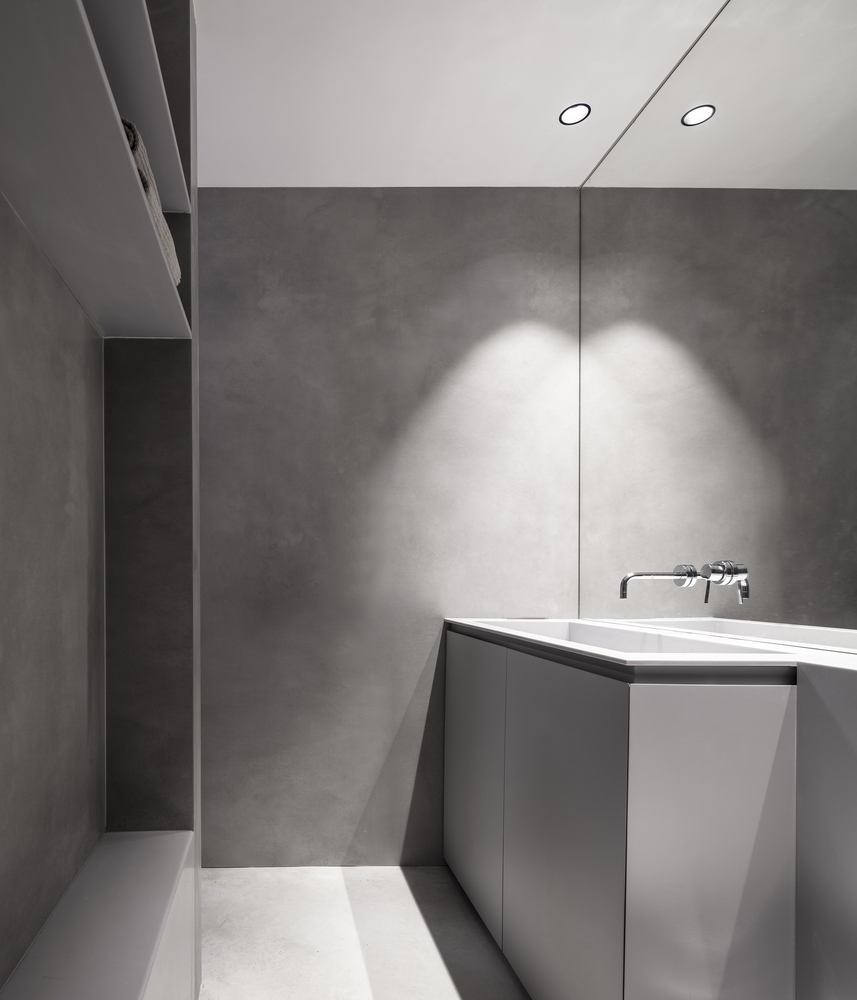Essay 4 Spatial Prosthesis MANADA Architectural Boundaries
2017-01-22 09:00
架构师提供的文本描述。假肢由人类开发,有两个目的:第一,纠正受损器官的功能;第二,扩大器官的固有能力。为了举例说明,验光师生产的眼镜是矫正假体;镜框及其不同的屈光能力有助于使用者恢复20/20的平均视力。相比之下,望远镜和显微镜都是广泛的假体-提供了一种可能,可以看到微小而又遥远的东西,以至于肉眼无法分辨。
Text description provided by the architects. Prostheses were developed by human beings with two purposes: first, to correct a damaged organ’s function; second, to extend an organ’s inherent capability. For the sake of exemplifying, the glasses that an optometrist produces are corrective prostheses; the frames and their different dioptric powers help the user to recover the average eyesight of 20/20. The telescope and the microscope, in contrast, are extensive prostheses—offering the possibility to see things so minute and so distant that the naked eye would be unable to distinguish.
这个建筑项目发生在墨西哥城Condesa社区的一个公寓里,是那些模糊了二元区别的项目之一。文章4是“探索”的典型用词,它是对现有空间的干预-这是一套风格古典主义的公寓,适用于社区的当代建筑,具有明显的结构元素、双高天花板和追求透明度-这表明,这将是一种不容易进入空间的方式。在任何写作实践中,我们都从不同的角度来处理这个空间。可以说,现有的空间实际上是封闭的,以重新发掘其潜力。因此,一个精细的铰接木结构是按照脚手架的相同原理组装的,以符合一系列扩展空间原有功能的深层次结构。有时,脚手架上满是台阶;有时,脚手架上放着一个装有书架的阁楼。从那里,脚手架延伸到露台,形成一个服务走廊,它最终建立在支撑着一个垂直花园的墙壁上。
The architectural project that took place at an apartment in the Condesa neighborhood, Mexico City, is one of those projects that blur binary distinctions. By calling it Essay 4, the literary term par excellence for ‘exploration’, the intervention to the existing space—an apartment of style classical to the neighborhood’s contemporary architecture, with apparent structural elements, double-height ceilings and a pursuit for transparency—reveals it will not be an easy approach to space. As in any essaying practice, we approach the space from different angles. It can be said that the existing space is literally enveloped to rediscover its potential. Thus, a finely articulated wood structure is assembled following the same rationale of a scaffold to conform a series of deep structures that extend the space’s original function. At times the scaffold is filled out with steps; at times it holds a mezzanine fitted with bookshelves. From there, the scaffold extends to the patio to shape a service hallway which in the end rests on the wall that holds a vertical garden.
换句话说,编织了一个脚手架,它可以攀爬,旋转,曲折,膨胀,空荡荡的,到处都是植物,用来装备和激活公寓里未连接的空间。脚手架将内部和外部结合在一起,连接各个层次,在需要隐私的地方得到巩固,并在追求透明度时保持为骨架。
In other words, a scaffold was woven, one that climbs, is filled, turns, twists, swells, is left empty and is saturated with plants, to equip and activate the apartment’s unarticulated spaces. The scaffold binds interior and exterior, connects levels, is solidified where privacy is needed and remains as a skeleton when pursuing transparency.
正如这位荷兰艺术家在他的新巴比伦项目中所做的那样,他只是为使用者提供了一个脚手架结构,以适应他们的生活空间。玛纳达提出了一种干预措施,很可能被认为既是矫正性的,也是广泛的假肢。由于以前没有铰接的空间之间有新的连接,而且由于结构上安装了不同的设备,可以坐着、保存书籍或悬挂植物,所以是正确的。所有这些假肢形式提供更多的空间功能,比那些期望的结构,只有支持。
Just as Constant, the Dutch artist, did with his New Babylon project, in which he merely offered a scaffold structure for the users to adapt their living space, MANADA gave rise to an intervention that may well be considered both a corrective and extensive prosthesis. Corrective since there are new connections between spaces which were previously unarticulated; and extensive since the structure is equipped with different devices that allow for sitting, keeping books or hanging plants. All these prosthetic forms offer more functions to the space than those expected from a structure that is only for support.
 举报
举报
别默默的看了,快登录帮我评论一下吧!:)
注册
登录
更多评论
相关文章
-

描边风设计中,最容易犯的8种问题分析
2018年走过了四分之一,LOGO设计趋势也清晰了LOGO设计
-

描边风设计中,最容易犯的8种问题分析
2018年走过了四分之一,LOGO设计趋势也清晰了LOGO设计
-

描边风设计中,最容易犯的8种问题分析
2018年走过了四分之一,LOGO设计趋势也清晰了LOGO设计



















































































